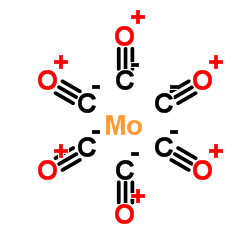Enhanced photolysis in aerosols: evidence for important surface effects.
Paul Nissenson, Christopher J H Knox, Barbara J Finlayson-Pitts, Leon F Phillips, Donald Dabdub
文献索引:Phys. Chem. Chem. Phys. 8(40) , 4700-10, (2006)
全文:HTML全文
摘要
While there is increasing evidence for unique chemical reactions at interfaces, there are fewer data on photochemistry at liquid-vapor junctions. This paper reports a comparison of the photolysis of molybdenum hexacarbonyl, Mo(CO)(6), in 1-decene either as liquid droplets or in bulk-liquid solutions. Mo(CO)(6) photolysis is faster by at least three orders of magnitude in the aerosols than in bulk-liquids. Two possible sources of this enhancement are considered: (1) increased light intensity due to either Morphology-Dependent Resonances (MDRs) in the spherical aerosol particles and/or to increased pathlengths for light inside the droplet due to refraction, which are termed physical effects in this paper; and (2) interface effects such as an incomplete solvent-cage at the gas-liquid boundary and/or enhanced interfacial concentrations of Mo(CO)(6), which are termed chemical effects. Quantitative calculations of the first possibility were carried out in which the light intensity distribution in the droplets averaged over 215-360 nm was obtained for 1-decene droplets. Calculations show that the average increase in light intensity over the entire droplet is 106%, with an average increase of 51% at the interface. These increases are much smaller than the observed increase in the apparent photolysis rate of droplets compared to the bulk. Thus, chemical effects, i.e., a decreased solvent-cage effect at the interface and/or enhancement in the surface concentration of Mo(CO)(6), are most likely responsible for the dramatic increase in the photolysis rate. Similar calculations were also carried out for broadband (290-600 nm) solar irradiation of water droplets, relevant to atmospheric conditions. These calculations show that, in agreement with previous calculations by Mayer and Madronich [B. Mayer and S. Madronich, Atmos. Chem. Phys., 2004, 4, 2241] MDRs produce only a moderate average intensity enhancement relative to the corresponding bulk-liquid slabs when averaged over a range of wavelengths characteristic of solar radiation at the Earth's surface. However, as in the case of Mo(CO)(6) in 1-decene, chemical effects may play a role in enhanced photochemistry at the aerosol-air interface for airborne particles.
相关化合物
| 结构式 | 名称/CAS号 | 分子式 | 全部文献 |
|---|---|---|---|
 |
六羰基钼
CAS:13939-06-5 |
C6MoO6 |
|
Determination of Ni(CO)4, Fe(CO)5, Mo(CO)6, and W(CO)6 in se...
1999-02-01 [J. Environ. Monit. 1(1) , 33-7, (1999)] |
|
In situ generation of carbon monoxide from solid molybdenum ...
2002-01-01 [J. Comb. Chem. 4(2) , 109-11, (2002)] |
|
Microwave-promoted aminocarbonylations of aryl chlorides usi...
2006-01-01 [J. Comb. Chem. 8(1) , 4-6, (2006)] |
|
Aminocarbonylations employing Mo(CO)6 and a bridged two-vial...
2012-12-21 [J. Org. Chem. 77(24) , 11393-8, (2012)] |
|
Research spotlight: Microwave chemistry enabling the synthes...
2010-02-01 [Future Med. Chem. 2(2) , 161-8, (2010)] |